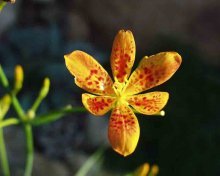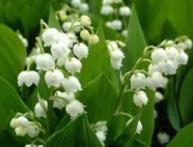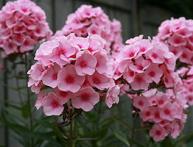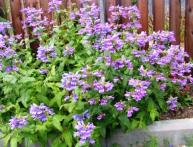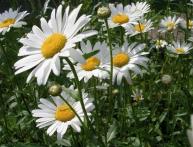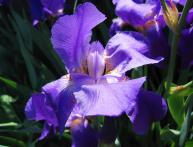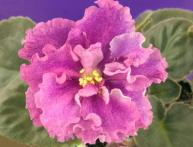Belamkanda Chinese: features of care and medicinal properties
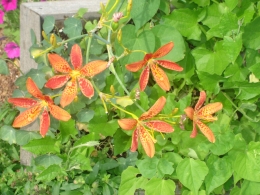
Belamkanda chinensis is a perennial plant of the Iris family, reaching a height of up to 1.5 m. In its natural habitat, it is found in Southeast Asia, India, China, and Russia. The leopard lily is an endangered species and is listed in the Red Book. In landscape design belamkanda is used to decorate small edges, decorate ponds, and looks beautiful in group plantings. In addition, leopard lily is grown as a potted crop.
Content:
- Description of the species
- What is the beauty of a plant?
- Features of cultivation
- Benefits and uses of the plant in folk medicine
Description of the species
Leopard lily is a member of the Iris family. Even an inexperienced florist can notice their similarities: sword-shaped leaves, three-sectored boxes, spherical seeds of a brownish-black hue. The medium-sized plant has a shallow, branched root system.
The dark green leaves are elongated, 40 cm long and 25 cm wide. A longitudinal thread-like vein runs through the middle of the leaf blade. Inflorescences on tall peduncles proudly mark the top of the plant.
The flowers have a very beautiful shape and can be yellow or orange. Each flower has 6 petals. One plant can have up to 20 buds.
Thanks to the gradual opening of the buds, flowering lasts for a long time. Only 3 flowers can be open at the same time.The unopened buds are beautiful. Their twisted shape makes them look like a cocoon or snail.
A pronounced relief vein runs along the outer edge of the oval petal. The flowers can also be faded yellow, orange, purple and pink. Leopard lilies - children of the sun, as their petals are often covered with freckles, colored brown or burgundy.
What is the beauty of a plant?
Since the plant’s homeland is warm countries, belamkanda is a heat-loving plant. In the southern regions of the country it can be grown as a perennial, in the northern regions it is cultivated as an annual plant. The exotic beauty begins to bloom at the end of May and flowering continues for a whole month. When grown in cold regions, this process may be delayed for some time.
It's a shame that the life of the most beautiful belamkanda flower is very short. In this regard, the plant can be compared to an indoor hibiscus - the flower does not live even for a day: it blooms in the morning and withers in the evening. The core of the flower contains 3 stamens and 1 ovary.
The fruit is an elongated capsule that opens easily when touched. In appearance, the fruit resembles a forest blackberry. Individual peas contain 1 seed. The berries are inedible, so you should not give in to the immediate desire to try them.
Features of cultivation
For good growth and development of belamkanda, you need to choose an open sunny area with light, well-drained soil. You can plant it in partial shade, but this will significantly affect the development of the plant and flowering.
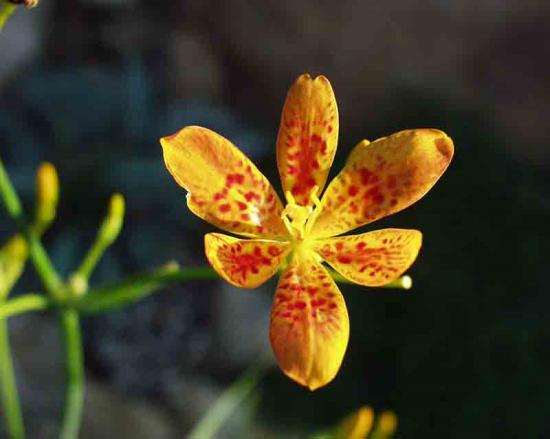
It loves humidity and prefers moderate watering, since waterlogging of the soil leads to rotting of the root system.Poor drainage prevents the soil from drying out, and during winter, excessive moisture has a detrimental effect on the plant. In order to protect the roots from rotting, it is recommended to cover the plant with waterproof material for the winter, even in countries with warm climates.
Belamkanda sinensis can be grown indoors as a potted crop. Care is no different from caring for amaryllis. In autumn, it is necessary to reduce watering and provide the plant with a period of rest. During the entire growing season, it is necessary to apply complex mineral fertilizers at intervals of 2 weeks.
During flowering, the interval between fertilizing will have to be shortened: the plant should be fed every week. Responds well to soil mulching with humus. The perennial is not susceptible to pest invasion. Among the known diseases, leopard lily can be affected by root rot, which is facilitated by excessive soil moisture.
The plant is afraid of the cold. If the temperature drops below -15 °C, the belamkanda will die. Recommended for cultivation in the southern regions. In the northern regions it is grown as annual. Sheltering belamkanda for the winter is carried out in accordance with the specific climatic conditions in which the plant grows.
In regions with a warm climate, you can mulch the soil with peat and cover it with spruce branches on top. In areas with harsh winters, such shelter will not save the plant. With the onset of cold weather, you will have to dig up the belamkanda, transplant it into a flower pot and store it in the room until spring. As soon as the soil warms up enough and there is no threat of return frosts, the plant can be transplanted into a flower bed.
Benefits and uses of the plant in folk medicine
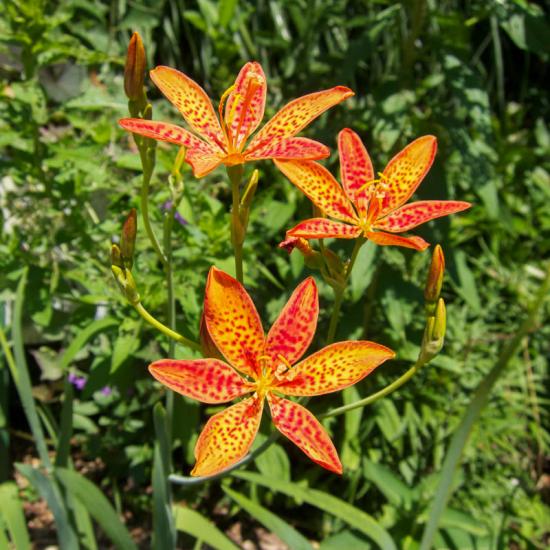
Belamkanda sinensis is a medicinal plant. Not all parts are used for treatment, only the rhizome, which is dug up, cleaned of sand, washed and dried. A decoction from the rhizome of Belmkanda has the following properties:
- antifungal
- antivirus
- anti-inflammatory
The decoction is used for coughs and other colds, and relieves sore throat. The effect of the root on the human body is still being studied. The purpose of the research is to study the effects of belamkanda on prostate cancer. The decoction has a diuretic and mild laxative effect.
Treatment with belamkanda should be carried out under the supervision of a doctor, since improper preparation of the decoction can lead to intoxication of the body. Used to treat skin diseases, sprains and injuries, and as an antidote to snake bites. The benefit of the rhizome lies in its ability to remove all harmful substances from the body.
Belamkanda chinensis is also popularly called tiger lily, orchid Chinese, homemade iris. But unlike bearded irises, it will not attract the eye “a kilometer away,” so the leopard lily, like an artistic miniature, needs to be planted in a special place so that you can stop and thoughtfully look at it.
Video about the Chinese belamkanda flower:

